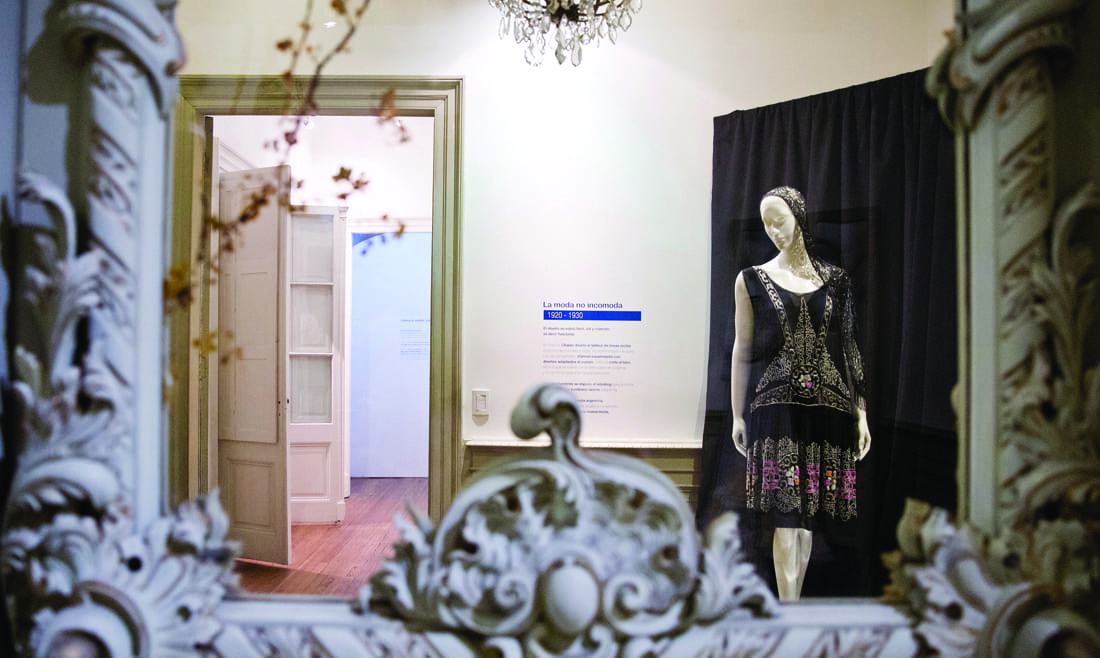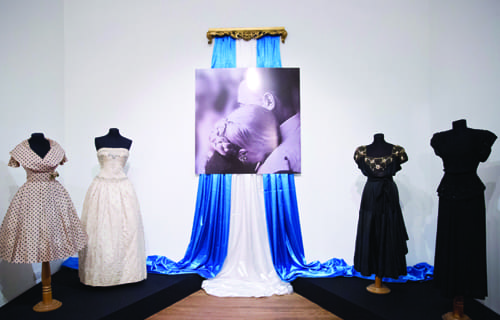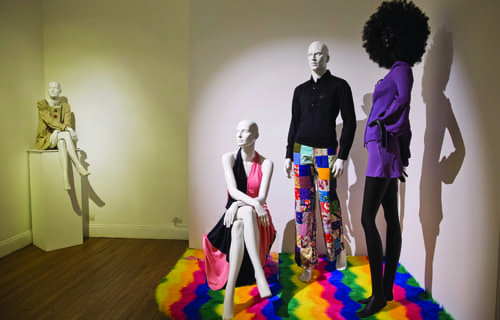After seven months of hard work, the National Museum of Costume History opened its renovated space in December 2015. Its historic building was remodeled, and the script and theme of all rooms were completely renovated.
Jorge Moragues, costume and scenography designer and the museum’s director, emphasized the cultural value of clothing in his inaugural speech: “The costume communicates, transmits ideology as a non-verbal language. Nowadays, we can add another form of expression: the fashion system, which represents the change and memory of mankind”.
Even though there were many changes made, the core of the museum’s renovation is the modification of the exhibitions. The ultimate goal is to give a broader look at history, including different disciplines, trades, industries and arts of Argentina and the region. As a consequence, it is expected that the museum will interact with schools, universities, community groups, theatres and cultural establishments.
The evidence of the transformation is the first permanent exhibition of this new era. It’s a precise exploration of Argentinean costume since the beginning of the country’s history. What’s more, it shows the relationship between both of them, as well as the impact of international events. It exposes how clothes and accessories can tell our own story.
Enlarge

Silvina Frydlewsky / Mauro Rico / Ministerio de Cultura de la Nación.
Clothes as a mark of time
The National Museum of Costume History is located in Montserrat, more specifically in the historical centre of the city of Buenos Aires. The pink and white front of the building, a large house that dates from 1830, sets the tune of the coming travel back into local history. A nice security guard opens the tall wooden and glass door and you instantly feel captivated by the colonial hall.
As you turn left, you are spontaneously guided by the building's disposition to go across the eight rooms that form the permanent exhibit. The first thing you see is a lot of pictures from around 1800, showing that time’s minorities: natives, African immigrants and gauchos.
Then, the mannequins take the lead, displaying the imperial fashion of 1800-1820. The federal garments, typical of the Juan Manuel de Rosas government, show red and yellow as principal colours of the period in which the Argentinean Nation was consolidated. The main accessory was the badge Rosas’ supporters wore (commonly, a blood red ribbon). This object was closely followed by ladies’ hair combs, which looked like an enormous fan (some of them were 1.20 metres wide). Hair combs were in fashion in Buenos Aires and Montevideo, Uruguay.
After that, Romanticism, Art Nouveau and the Belle Époque catch the attention of the visitors, as women’s dresses became more complex, with rich details, full skirts and bustles. Here, the museum recalls the concept of designed bodies, restricted by corsets.
Another room follows, and another world is discovered. “Fashion is not uncomfortable” is written on the wall, and you can rapidly see what they mean, looking at flapper style dresses from the 1920s and 1930s that liberated the feminine silhouette. Argentina’s middle class, including a large number of European immigrants, adopted the new, practical and economical fashion trends. 1940 is introduced with a local icon: Eva Perón. Four distinguished dresses are displayed as a representative reflection of her personal style.
The following chamber brings back the aesthetic, political and cultural evolution of the 60’s and 70’s, focusing on the hippie movement and pop art. “Free your mind, then your clothes” says the slogan. This moment of history marks the origins of what’s called author design in Argentina. Designers like Mary Tapia and Medora Manero started to assimilate local materials, designs and techniques with international trends. In consequence, they offered creative proposals with a distinct signature, not mere echoes of others' work.
The last two rooms approach a separate form of fashion, showing religious clothes used by Catholic priests to officiate mass before 1965, and costumes from films. Here you can see an embroidered gaucho costume worn by tango singer Carlos Gardel in the famous film El Día que me Quieras.
Few people were in the museum’s narrow corridors, since it’s the time of the year when the city looks a bit abandoned and many residents get away from the cement landscape, looking for sand, sun and sea. The rooms were not crowded at all and you could see the fashion evolution quietly at your own pace. Close to the exit door, the amiable security guard was handing over fabric bags featuring the Ministry of Culture and a postcard of the museum.
Enlarge

Silvina Frydlewsky / Mauro Rico / Ministerio de Cultura de la Nación.
Future travels
During the reopening, they announced the expansion of the library, the creation of a textile library, the opening of a room dedicated to temporary expositions about clothing production and the search for new donations among another future measures. The museum already has a collection of 9,100 pieces of clothing, but they only cover history up until 1940.
Apart from all of this, the museum will generate theoretical and scientific publications. Moreover, its facilities will incorporate audio-visual technology, websites and social networks, so as to produce a more dynamic tour.
According to the director, the purpose is to generate a space for search, reflection and debate regarding costumes as part of the national identity. Another related aim is to include different communities (natives, immigrants, African-Americans) from several regions of the country, that have been ignored in the historical script. In the same way, the museum will bring recognition to antique trades and knowledge regarding the process of making clothing; different disciplines, creators, couturiers and new designers will be a part of the museum.
It is popularly believed that you have to know the past to understand the present and to predict what the future may bring. This just might be a fact when it comes to fashion and its cycles. All things considered, the National Museum of Costume History is just the place to dive into our roots.
Enlarge

Silvina Frydlewsky / Mauro Rico / Ministerio de Cultura de la Nación.
